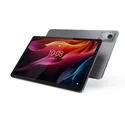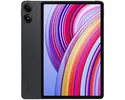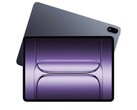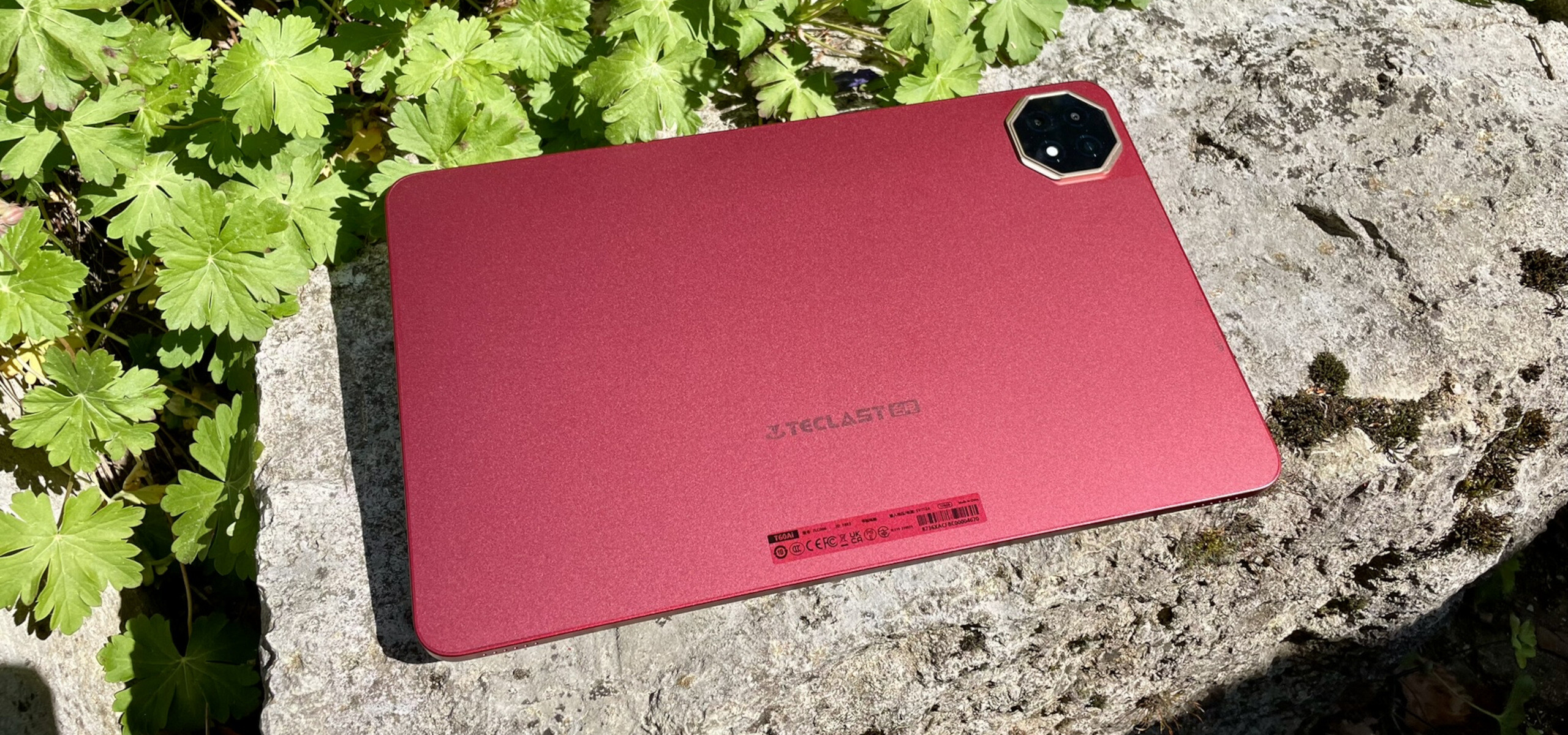
The affordable 12-inch tablet with surprising extras – Teclast T60 AI review
Input pen and folio cover included.
The 12-inch Teclast T60 AI costs less than $200, while still coming with extensive features including a 90 Hz display, a headphone jack and stereo speakers. It also boasts a number of AI functions and even has 2 USB-C ports, one of which supports USB 3.1 Gen 1 and DisplayPort.Manuel Masiero, 👁 Florian Schmitt (translated by Daisy Dickson) Published 🇩🇪 🇫🇷 ...
Verdict on the Teclast T60 AI
If you're on the hunt for an affordable tablet for surfing and multimedia use, then you may enjoy the Teclast T60 AI, not least because it comes delivered with a folio cover and stylus included. This entry-level tablet has lots of space for content on its 12-inch IPS display and thanks to a desktop mode, multiple apps can be displayed at once. Although its 90 Hz display isn't the brightest, it's still perfectly sufficient for indoor use.
Additional things that speak in favor of the T60 AI include its good features, such as stereo speakers, 128 GB of storage space, a microSD card slot, a 3.5 mm jack and even two USB-C ports, of which one supports fast USB 3.1 Gen 1 and even DisplayPort. The AI functions that give the tablet its name are rather unspectacular apart from AI video upscaling, which delivers surprisingly impressive results.
Disadvantages: The T60 AI doesn't run for particularly long, it takes a while to charge, and it comes with neither GPS, a fingerprint sensor, nor facial recognition using the selfie camera. Adding to this are mediocre cameras and unclear update delivery. Games only run with several limitations and if you place great importance on smooth operation, then you'll be happier with more powerful competitor devices such as the Honor Pad or the Xiaomi Redmi Pad Pro.
Pros
Cons
Price and availability
The Teclast T60 AI retails for $169. You can view Teclast's official stockists via its website.
Table of Contents
- Verdict on the Teclast T60 AI
- Specifications
- Case - The Teclast T60 AI with a burgundy red metal case
- Connectivity - 2x USB-C and support for DisplayPort
- Software - Android 15, AI functions and desktop mode
- Communication and GNSS - The Teclast T60 AI without GPS
- Cameras - Only suitable for snapshots
- Accessories and warranty - The T60 AI with a 12-month warranty
- Input devices and operation - The Teclast tablet with a stylus
- Display - PWM-free IPS screen at 90 Hz
- Performance - The Teclast T60 AI with the Allwinner A733
- Games - Rarely run smoothly
- Emissions - The T60 AI with stereo speakers
- Battery life - The 12-inch tablet with little stamina
- Notebookcheck total rating
- Possible alternatives compared
The key data of the Teclast T60 AI reads promisingly. For less than $200, you get a 12-inch tablet in a metal case with a 2K resolution, 90 Hz refresh rate and 128 GB of storage space. It also comes with Android 15 and a range of AI functions that give the tablet its name.
With its Allwinner A733, the T60 AI is powered by the same eight-core SoC as its sister model, the Teclast P50 AI, which performed well in our test. In the following review, we'll find out whether its 12-inch colleague can follow suit and also earn our recommendation.
Specifications
Case - The Teclast T60 AI with a burgundy red metal case
Teclast has packaged its T60 AI inside a metal case, which features a burgundy red color and an octagon-shaped and gold-colored camera bezel on the back.
The case is well made with its rounded corners and edges, but can be dented with little effort and sometimes even just touching it results in a clearly audible creak. Even so, the tablet is sturdy enough for everyday use. Once again, it doesn't have an IP certification.
At 624 grams, the T60 AI weighs slightly more than similarly sized competitors such as the Honor Pad 9 and the Xiaomi Redmi Pad Pro, but still doesn't feel too heavy and is nice and thin with a height of 8.4 millimetres. Its display bezels, which are around one centimeter wide on all sides, allow the tablet to be held securely in your hand without making erroneous inputs on its IPS display.
Connectivity - 2x USB-C and support for DisplayPort
Teclast has equipped its tablet with 6 GB LPDDR5 RAM and 128 GB UFS 3.1 storage. The RAM can be increased to up to 16 GB via virtual memory expansion, but this is of little use because the tablet only creates a swap file in its much slower UFS storage.
On the other hand, the T60 AI has more to offer when it comes to its interfaces, as the tablet features two USB-C ports with OTG support in addition to a headphone jack and a microSD card reader that can accommodate cards up to 1 TB in size. The upper one works at USB 2.0 speed and is primarily used as a charging port.
The lower USB port supports significantly faster data transfers with USB-C 3.1 Gen 1 (nominally 5 GBit/s) and also functions as a DisplayPort output. This allows the Teclast tablet to mirror its screen content on a monitor or portable display, for example, which worked fine during our test.
microSD card reader
Using our Angelbird AV Pro V60 microSD reference card, the tablet's card reader ran at a comfortable pace. The competition was significantly faster in both the cross-platform disk test and the copying test.
| SD Card Reader - average JPG Copy Test (av. of 3 runs) | |
| Samsung Galaxy Tab A9+ (Angelbird AV Pro V60) | |
| Xiaomi Redmi Pad Pro (Angelbird V60) | |
| Average of class Tablet (10.2 - 57.4, n=53, last 2 years) | |
| Lenovo Tab K11 Plus (Angelbird V60) | |
| Teclast T60 Plus (Angelbird V60) | |
| Teclast T60 AI (Angelbird V60) | |
Cross Platform Disk Test (CPDT)
Software - Android 15, AI functions and desktop mode
The Teclast T60 AI runs Android 15. The Teclast OS is mostly the same as the standard version of Android, so users won't have to get used to a new UI. Included is PC Mode, a special desktop mode designed for use with a mouse and keyboard.
When using PC Mode, apps are launched in a window and can be moved around on the desktop. This even worked with the games PUBG Mobile and Genshin Impact that we installed for our test, which ran in parallel in their own window. However, they could then no longer be controlled properly.
AI features have so far been the big exception for inexpensive tablets. Nevertheless, the T60 AI offers a small selection of them. For example, the 12-inch tablet can improve video image quality, and recognize hand gestures and users' poor posture.
Videos upscaled to the tablet's native resolution actually look a lot better and you can display the original video at the same time to visualize the difference. DRM Widevine L1 is supported, so you can watch copy-protected streams in HD quality.
The T60 AI quickly warns the user of poor posture via a pop-up, and it mostly responded reliably to hand gestures during our test. Still, this always took a while because the selfie camera has to recognize your hand first. For example, you can hold up your hand and then turn your palm to give a back command. On the flip side, the tablet behaved stubbornly when swiping to scroll up or down: it almost always did nothing.
Teclast hasn't provided any information on how long OS upgrades and security updates will be available for the T60 AI and how often they will be provided. Buyers should therefore be prepared for a potentially short support period. At the time of testing, the latest Android security patches were from March 1, so still relatively up-to-date.
Sustainability
Teclast doesn't attach much importance to sustainability, at least outwardly. There is no information on its website about the tablet's carbon footprint or the manufacturer's environmental efforts. The T60 AI is wrapped in a plastic film and the colorful packaging doesn't reveal the ingredients of the inks that have been used.
Communication and GNSS - The Teclast T60 AI without GPS
The T60 AI supports Bluetooth 5.4 and WiFi 6, but features neither GPS nor an NFC module. In addition, Teclast doesn't offer a cellular version of its 12-inch tablet.
The Teclast tablet uses the latest WiFi standard, namely WiFi 6, but in practice, you won't notice much of it, as it can't use the 6 GHz band. When connected to our reference router, the Asus ROG Rapture GT-AXE11000, its transfer rates were only at the level of WiFi 5 and weren't particularly stable.
That being said, you don't usually get much more from the competition in this price range. A commendable exception to this is the now very affordable Xiaomi Redmi Pad Pro, which shows how fast WiFi 6 can be using the 5 GHz band.
Cameras - Only suitable for snapshots
The T60 AI's selfie camera, which is integrated in the center of the upper frame, has a resolution of 5 MP and delivers passable image quality that's at least okay in good lighting conditions. Overall, however, it only captures few details and doesn't produce particularly sharp images.
The 13 MP main camera on the back doesn't do much better. It's suitable for occasional snapshots, taking photos of documents or scanning QR codes. However, if you enjoy taking photos on a tablet, you likely won't be happy with the T60 AI.
Photos taken with its main camera are sometimes evenly lit, but often appear too bright, as can be seen in the first example image. Overall, the photos show little dynamic range, hardly any sharpness and feature strong background noise. The camera's brightness adjustment and autofocus only work sluggishly. In addition, the latter produces a visible pumping effect when searching for the focus area. Low-light conditions quickly overwhelm the camera.
The tablet can record videos with a maximum of 1080p at 30 frames per second. Its recording quality is comparable to that of its photos.
Image comparison
Choose a scene and navigate within the first image. One click changes the position on touchscreens. One click on the zoomed-in image opens the original in a new window. The first image shows the scaled photograph of the test device.
Daylight photoDaylight photoLow-light photoIn controlled lighting conditions, the device's main camera didn't match the ColorChecker reference colors or grayscale levels very accurately. It didn't capture the test chart sharply even with optimal lighting. At 1 lux of light, it almost disappeared completely in the dark.
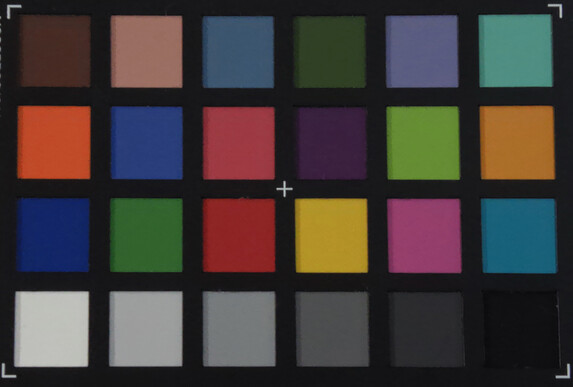

Accessories and warranty - The T60 AI with a 12-month warranty
The Teclast T60 AI comes with a 10-watt power adapter (5V/2A), a USB-C cable, a quick start guide and a warranty card. There is also a folio cover and a stylus included. Teclast doesn't offer any special accessories for its tablet.
The Teclast T60 AI is covered by a standard 12-month warranty.
Input devices and operation - The Teclast tablet with a stylus
The T60 AI's 2K screen is scanned up to 180 times per second, almost always processes inputs quickly and reliably, and runs smoothly thanks to its 90 Hz refresh rate. From time to time, however, taps on the touchscreen seem to be too short for it, meaning the inputs aren't registered and nothing happens.
During our test, we often found that the T60 AI only launched an app, for example, after we had repeated the input and pressed the icon a little longer with our finger or the included stylus. The physical buttons, on the other hand, work perfectly. They sit firmly in its case, are easy to feel and have a clear pressure point.
The stylus may cause some confusion because it looks like a ballpoint pen and its pointed end actually does contain a normal ballpoint pen refill, but the blunt end with its soft rubber attachment is used for inputs on the display.
You can safely transport the Teclast tablet with its folio cover, which is also included in its scope of delivery. The three-part cover can be used as a stand that positions the T60 AI at a fixed angle of around 70 degrees.
The tablet doesn't have a fingerprint sensor or facial recognition via the selfie camera, so it offers no biometric authentication option. Access to the T60 AI can only be protected via a PIN, pattern or password.
Display - PWM-free IPS screen at 90 Hz
With a pixel density of 195 PPI, the T60 AI's 2000 x 1200 pixel IPS panel offers sufficiently high image sharpness. However, if you look very closely, you can see pixel structures.
When displaying a white background, the Teclast tablet achieves an average brightness of 327 cd/m², which is good enough for indoor use. With an even distribution of bright and dark image areas (APL18 measurement), its brightness increases to up to 365 cd/m². The tablet doesn't support HDR.
The IPS screen doesn't use PWM, which makes the T60 AI suitable for users who are sensitive to screen flickering.
| |||||||||||||||||||||||||
Brightness Distribution: 89 %
Center on Battery: 343 cd/m²
Contrast: 1715:1 (Black: 0.2 cd/m²)
ΔE ColorChecker Calman: 8.1 | ∀{0.5-29.43 Ø4.78}
ΔE Greyscale Calman: 9.5 | ∀{0.09-98 Ø5}
91% sRGB (Calman 2D)
Gamma: 2.197
CCT: 9376 K
| Teclast T60 AI IPS, 2000x1200, 12" | Honor Pad 9 IPS LCD, 2560x1600, 12.1" | Lenovo Tab K11 Plus IPS, 2000x1200, 11.5" | Samsung Galaxy Tab A9+ TFT-LCD, 1920x1200, 11" | Teclast T60 Plus IPS LCD, 2000x1200, 12" | Xiaomi Redmi Pad Pro IPS, 2560x1600, 12.1" | |
|---|---|---|---|---|---|---|
| Screen | 30% | 38% | 10% | 13% | 20% | |
| Brightness middle (cd/m²) | 343 | 613 79% | 473 38% | 493 44% | 487 42% | 513 50% |
| Brightness (cd/m²) | 327 | 570 74% | 449 37% | 460 41% | 472 44% | 480 47% |
| Brightness Distribution (%) | 89 | 87 -2% | 87 -2% | 90 1% | 92 3% | 86 -3% |
| Black Level * (cd/m²) | 0.2 | 0.4 -100% | 0.25 -25% | 0.35 -75% | 0.34 -70% | 0.4 -100% |
| Contrast (:1) | 1715 | 1533 -11% | 1892 10% | 1409 -18% | 1432 -17% | 1283 -25% |
| Colorchecker dE 2000 * | 8.1 | 2.7 67% | 1.56 81% | 6 26% | 6.16 24% | 2.82 65% |
| Colorchecker dE 2000 max. * | 20.45 | 5.1 75% | 3.8 81% | 11.7 43% | 10.96 46% | 8.83 57% |
| Greyscale dE 2000 * | 9.5 | 3.7 61% | 1.3 86% | 8.2 14% | 6.4 33% | 2.9 69% |
| Gamma | 2.197 100% | 2.3 96% | 2.178 101% | 2.21 100% | 2.38 92% | 2.265 97% |
| CCT | 9376 69% | 6763 96% | 6726 97% | 9131 71% | 8212 79% | 7189 90% |
* ... smaller is better
Screen Flickering / PWM (Pulse-Width Modulation)
| Screen flickering / PWM not detected | |||
In comparison: 53 % of all tested devices do not use PWM to dim the display. If PWM was detected, an average of 8142 (minimum: 5 - maximum: 343500) Hz was measured. | |||
Thanks to its low black value of 0.2 cd/m², the IPS display manages a good contrast ratio of 1715:1, but it unfortunately doesn't display colors particularly accurately. The values we measured are well above the ideal range (Delta-E < 3) and its high color temperature of 9376 K shifts the display into the bluish range.
Display Response Times
| ↔ Response Time Black to White | ||
|---|---|---|
| 30.9 ms ... rise ↗ and fall ↘ combined | ↗ 16.5 ms rise | |
| ↘ 14.4 ms fall | ||
| The screen shows slow response rates in our tests and will be unsatisfactory for gamers. In comparison, all tested devices range from 0.1 (minimum) to 240 (maximum) ms. » 83 % of all devices are better. This means that the measured response time is worse than the average of all tested devices (20.2 ms). | ||
| ↔ Response Time 50% Grey to 80% Grey | ||
| 41.2 ms ... rise ↗ and fall ↘ combined | ↗ 19.9 ms rise | |
| ↘ 20.3 ms fall | ||
| The screen shows slow response rates in our tests and will be unsatisfactory for gamers. In comparison, all tested devices range from 0.165 (minimum) to 636 (maximum) ms. » 65 % of all devices are better. This means that the measured response time is worse than the average of all tested devices (31.7 ms). | ||
Performance - The Teclast T60 AI with the Allwinner A733
Although the Allwinner A733 doesn't turn the T60 AI into a racehorse, it does still give it solid performance. During everyday use, this is usually reflected in smooth operation and is just as sufficient for social media as it is for surfing the web and watching videos. However, similarly priced competitors such as the Honor Pad 9 and the Xiaomi Redmi Pad Pro offer significantly better performance.
| UL Procyon AI Inference for Android - Overall Score NNAPI | |
| Average of class Tablet (2597 - 76852, n=65, last 2 years) | |
| Honor Pad 9 | |
| Xiaomi Redmi Pad Pro | |
| Samsung Galaxy Tab A9+ | |
| Teclast T60 Plus | |
| Teclast T60 AI | |
| Lenovo Tab K11 Plus | |
| Average Allwinner A733 (3600 - 3937, n=2) | |
| Geekbench AI | |
| Single Precision TensorFlow NNAPI 1.1 | |
| Xiaomi Redmi Pad Pro | |
| Average of class Tablet (243 - 1243, n=8, last 2 years) | |
| Half Precision TensorFlow NNAPI 1.1 | |
| Average of class Tablet (227 - 5204, n=8, last 2 years) | |
| Xiaomi Redmi Pad Pro | |
| Quantized TensorFlow NNAPI 1.1 | |
| Average of class Tablet (508 - 4998, n=8, last 2 years) | |
| Xiaomi Redmi Pad Pro | |
In the GPU tests, the Teclast tablet was almost always at the back of the pack. The graphics performance of the IMG BXM-4-64 MC1 used in the Allwinner A733 was only sufficient to display graphically very simple benchmarks smoothly.
GFXBench (DX / GLBenchmark) 2.7: T-Rex Onscreen | 1920x1080 T-Rex Offscreen
GFXBench 3.0: on screen Manhattan Onscreen OGL | 1920x1080 1080p Manhattan Offscreen
GFXBench 3.1: on screen Manhattan ES 3.1 Onscreen | 1920x1080 Manhattan ES 3.1 Offscreen
GFXBench: on screen Car Chase Onscreen | 1920x1080 Car Chase Offscreen | on screen Aztec Ruins High Tier Onscreen | 2560x1440 Aztec Ruins High Tier Offscreen | on screen Aztec Ruins Normal Tier Onscreen | 1920x1080 Aztec Ruins Normal Tier Offscreen | 3840x2160 4K Aztec Ruins High Tier Offscreen
| 3DMark / Wild Life Extreme Unlimited | |
| Xiaomi Redmi Pad Pro | |
| Honor Pad 9 | |
| Samsung Galaxy Tab A9+ | |
| Teclast T60 Plus | |
| Lenovo Tab K11 Plus | |
| Teclast T60 AI | |
| 3DMark / Wild Life Extreme | |
| Xiaomi Redmi Pad Pro | |
| Honor Pad 9 | |
| Samsung Galaxy Tab A9+ | |
| Teclast T60 Plus | |
| Lenovo Tab K11 Plus | |
| Teclast T60 AI | |
| 3DMark / Wild Life Unlimited Score | |
| Xiaomi Redmi Pad Pro | |
| Honor Pad 9 | |
| Samsung Galaxy Tab A9+ | |
| Teclast T60 Plus | |
| Lenovo Tab K11 Plus | |
| Teclast T60 AI | |
| 3DMark / Wild Life Score | |
| Xiaomi Redmi Pad Pro | |
| Honor Pad 9 | |
| Samsung Galaxy Tab A9+ | |
| Teclast T60 Plus | |
| Lenovo Tab K11 Plus | |
| Teclast T60 AI | |
| 3DMark / Sling Shot Extreme (ES 3.1) Unlimited Physics | |
| Xiaomi Redmi Pad Pro | |
| Samsung Galaxy Tab A9+ | |
| Teclast T60 AI | |
| Lenovo Tab K11 Plus | |
| Teclast T60 Plus | |
| 3DMark / Sling Shot Extreme (ES 3.1) Unlimited Graphics | |
| Xiaomi Redmi Pad Pro | |
| Samsung Galaxy Tab A9+ | |
| Lenovo Tab K11 Plus | |
| Teclast T60 Plus | |
| Teclast T60 AI | |
| 3DMark / Sling Shot Extreme (ES 3.1) Unlimited | |
| Xiaomi Redmi Pad Pro | |
| Samsung Galaxy Tab A9+ | |
| Lenovo Tab K11 Plus | |
| Teclast T60 Plus | |
| Teclast T60 AI | |
| GFXBench (DX / GLBenchmark) 2.7 / T-Rex Onscreen | |
| Samsung Galaxy Tab A9+ | |
| Xiaomi Redmi Pad Pro | |
| Honor Pad 9 | |
| Teclast T60 Plus | |
| Teclast T60 AI | |
| Lenovo Tab K11 Plus | |
| GFXBench (DX / GLBenchmark) 2.7 / T-Rex Offscreen | |
| Xiaomi Redmi Pad Pro | |
| Honor Pad 9 | |
| Samsung Galaxy Tab A9+ | |
| Teclast T60 Plus | |
| Teclast T60 AI | |
| Lenovo Tab K11 Plus | |
| GFXBench 3.0 / Manhattan Onscreen OGL | |
| Samsung Galaxy Tab A9+ | |
| Xiaomi Redmi Pad Pro | |
| Honor Pad 9 | |
| Teclast T60 Plus | |
| Teclast T60 AI | |
| Lenovo Tab K11 Plus | |
| GFXBench 3.0 / 1080p Manhattan Offscreen | |
| Xiaomi Redmi Pad Pro | |
| Honor Pad 9 | |
| Samsung Galaxy Tab A9+ | |
| Teclast T60 Plus | |
| Teclast T60 AI | |
| Lenovo Tab K11 Plus | |
| GFXBench 3.1 / Manhattan ES 3.1 Onscreen | |
| Samsung Galaxy Tab A9+ | |
| Xiaomi Redmi Pad Pro | |
| Honor Pad 9 | |
| Teclast T60 Plus | |
| Teclast T60 AI | |
| Lenovo Tab K11 Plus | |
| GFXBench 3.1 / Manhattan ES 3.1 Offscreen | |
| Xiaomi Redmi Pad Pro | |
| Honor Pad 9 | |
| Samsung Galaxy Tab A9+ | |
| Teclast T60 Plus | |
| Teclast T60 AI | |
| Lenovo Tab K11 Plus | |
| GFXBench / Car Chase Onscreen | |
| Samsung Galaxy Tab A9+ | |
| Xiaomi Redmi Pad Pro | |
| Honor Pad 9 | |
| Teclast T60 Plus | |
| Teclast T60 AI | |
| Lenovo Tab K11 Plus | |
| GFXBench / Car Chase Offscreen | |
| Xiaomi Redmi Pad Pro | |
| Honor Pad 9 | |
| Samsung Galaxy Tab A9+ | |
| Teclast T60 Plus | |
| Teclast T60 AI | |
| Lenovo Tab K11 Plus | |
| GFXBench / Aztec Ruins High Tier Onscreen | |
| Samsung Galaxy Tab A9+ | |
| Xiaomi Redmi Pad Pro | |
| Honor Pad 9 | |
| Teclast T60 Plus | |
| Teclast T60 AI | |
| Lenovo Tab K11 Plus | |
| GFXBench / Aztec Ruins High Tier Offscreen | |
| Xiaomi Redmi Pad Pro | |
| Honor Pad 9 | |
| Samsung Galaxy Tab A9+ | |
| Teclast T60 Plus | |
| Teclast T60 AI | |
| Lenovo Tab K11 Plus | |
| GFXBench / Aztec Ruins Normal Tier Onscreen | |
| Samsung Galaxy Tab A9+ | |
| Xiaomi Redmi Pad Pro | |
| Honor Pad 9 | |
| Teclast T60 Plus | |
| Teclast T60 AI | |
| Lenovo Tab K11 Plus | |
| GFXBench / Aztec Ruins Normal Tier Offscreen | |
| Xiaomi Redmi Pad Pro | |
| Honor Pad 9 | |
| Samsung Galaxy Tab A9+ | |
| Teclast T60 Plus | |
| Teclast T60 AI | |
| Lenovo Tab K11 Plus | |
| GFXBench / 4K Aztec Ruins High Tier Offscreen | |
| Xiaomi Redmi Pad Pro | |
| Honor Pad 9 | |
| Samsung Galaxy Tab A9+ | |
| Teclast T60 Plus | |
| Teclast T60 AI | |
| Lenovo Tab K11 Plus | |
The browser benchmark results don't show the T60 AI's performance in a particularly good light. Nevertheless, you can still surf the web quickly on the tablet and rarely have to wait until a page is fully loaded.
| Jetstream 2 - 2.0 Total Score | |
| Average of class Tablet (22.3 - 395, n=69, last 2 years) | |
| Xiaomi Redmi Pad Pro (Chrome 128) | |
| Samsung Galaxy Tab A9+ (Chrome 121.0.6167.143) | |
| Honor Pad 9 (Chrome 122) | |
| Lenovo Tab K11 Plus (Chrome 131.0.6778.260) | |
| Average Allwinner A733 (56.9 - 67.6, n=2) | |
| Teclast T60 AI (Chrome 136.0.7103.87) | |
| Teclast T60 Plus (Chrome 131) | |
| Speedometer 2.0 - Result 2.0 | |
| Average of class Tablet (2.59 - 790, n=58, last 2 years) | |
| Honor Pad 9 (Chrome 122) | |
| Samsung Galaxy Tab A9+ (Chrome 121.0.6167.143) | |
| Lenovo Tab K11 Plus (Chrome 131.0.6778.260) | |
| Average Allwinner A733 (45 - 55.8, n=2) | |
| Teclast T60 AI (Chrome 136.0.7103.87) | |
| Speedometer 3 - Score 3.0 | |
| Average of class Tablet (1.25 - 49.1, n=63, last 2 years) | |
| Xiaomi Redmi Pad Pro (Chrome 128) | |
| Honor Pad 9 (Chrome 122) | |
| Lenovo Tab K11 Plus (Chrome 131.0.6778.260) | |
| Average Allwinner A733 (3 - 3.75, n=2) | |
| Teclast T60 Plus (Chrome 131) | |
| Teclast T60 AI (Chrome 136.0.7103.87) | |
| WebXPRT 4 - Overall | |
| Average of class Tablet (26 - 376, n=74, last 2 years) | |
| Xiaomi Redmi Pad Pro (Chrome 128) | |
| Samsung Galaxy Tab A9+ (Chrome 121.0.6167.143) | |
| Honor Pad 9 (Chrome 122) | |
| Lenovo Tab K11 Plus (Chrome 131.0.6778.260) | |
| Average Allwinner A733 (57 - 66, n=2) | |
| Teclast T60 AI (Chrome 136.0.7103.87) | |
| Teclast T60 Plus (Chrome 131) | |
| Octane V2 - Total Score | |
| Average of class Tablet (763 - 138481, n=98, last 2 years) | |
| Xiaomi Redmi Pad Pro (Chrome 128) | |
| Honor Pad 9 (Chrome 122) | |
| Samsung Galaxy Tab A9+ (Chrome 121.0.6167.143) | |
| Teclast T60 AI (Chrome 136.0.7103.87) | |
| Average Allwinner A733 (17241 - 18158, n=2) | |
| Lenovo Tab K11 Plus (Chrome 131.0.6778.260) | |
| Teclast T60 Plus (Chrome 131) | |
| Mozilla Kraken 1.1 - Total | |
| Teclast T60 Plus (Chrome 131) | |
| Teclast T60 AI (Chrome 136.0.7103.87) | |
| Average of class Tablet (243 - 27101, n=83, last 2 years) | |
| Average Allwinner A733 (2376 - 2604, n=2) | |
| Lenovo Tab K11 Plus (Chrome 131.0.6778.260) | |
| Samsung Galaxy Tab A9+ (Chrome 121.0.6167.143) | |
| Honor Pad 9 (Chrome 122) | |
| Xiaomi Redmi Pad Pro (Chrome 128) | |
* ... smaller is better
According to Teclast, UFS 3.1 storage is used inside the T60 AI. Even so, it doesn't work very efficiently in this tablet, only reaching a level of UFS 2.2 in terms of its read and write speeds. Nevertheless, this isn't necessarily a bad thing, as many other inexpensive tablets only use significantly slower eMMC flash storage.
| Teclast T60 AI | Honor Pad 9 | Lenovo Tab K11 Plus | Samsung Galaxy Tab A9+ | Teclast T60 Plus | Xiaomi Redmi Pad Pro | Average 128 GB UFS 3.1 Flash | Average of class Tablet | |
|---|---|---|---|---|---|---|---|---|
| AndroBench 3-5 | 149% | 86% | 7% | -66% | 62% | 90% | 153% | |
| Sequential Read 256KB (MB/s) | 1106.24 | 1921.34 74% | 1003.25 -9% | 485.96 -56% | 296.42 -73% | 844.9 -24% | 1586 ? 43% | 1739 ? 57% |
| Sequential Write 256KB (MB/s) | 252.07 | 1222.83 385% | 876.29 248% | 476.37 89% | 193.23 -23% | 705.3 180% | 763 ? 203% | 1295 ? 414% |
| Random Read 4KB (MB/s) | 228.09 | 256.06 12% | 244.03 7% | 130.67 -43% | 49.58 -78% | 215.5 -6% | 243 ? 7% | 243 ? 7% |
| Random Write 4KB (MB/s) | 117.81 | 266.17 126% | 232.16 97% | 162.9 38% | 13.21 -89% | 231.4 96% | 241 ? 105% | 276 ? 134% |
Games - Rarely run smoothly
Our tests using Gamebench and a small selection of games revealed that the T60 AI can run graphically simpler games quite smoothly. PUBG Mobile ran at a relatively constant 30 frames per second in the HD setting, although the frame rate did dip.
Genshin Impact, on the other hand, was no fun to play at all. On average, the graphically demanding adventure role-playing game only ran at a jerky 17 frames per second, even at the lowest detail level.
Emissions - The T60 AI with stereo speakers
Temperature
The Teclast tablet remains cool during operation and didn't get more than lukewarm even after an hour of maximum load using the Burnout benchmark. The SoC was similarly unimpressed. As the 3DMark stress tests showed, its performance practically doesn't slow down at all under load.
(+) The maximum temperature on the upper side is 35.2 °C / 95 F, compared to the average of 33.7 °C / 93 F, ranging from 20.7 to 53.2 °C for the class Tablet.
(+) The bottom heats up to a maximum of 34.6 °C / 94 F, compared to the average of 33.2 °C / 92 F
(+) In idle usage, the average temperature for the upper side is 23 °C / 73 F, compared to the device average of 30 °C / 86 F.
3DMark Steel Nomad stress test
| 3DMark | |
| Wild Life Stress Test Stability | |
| Honor Pad 9 | |
| Lenovo Tab K11 Plus | |
| Xiaomi Redmi Pad Pro | |
| Samsung Galaxy Tab A9+ | |
| Teclast T60 Plus | |
| Teclast T60 AI | |
| Wild Life Extreme Stress Test | |
| Honor Pad 9 | |
| Teclast T60 Plus | |
| Xiaomi Redmi Pad Pro | |
| Samsung Galaxy Tab A9+ | |
| Lenovo Tab K11 Plus | |
| Teclast T60 AI | |
| Steel Nomad Light Stress Test Stability | |
| Lenovo Tab K11 Plus | |
Speakers
The T60 AI is equipped with stereo speakers located on the bottom of its case. In the frequency diagram, the mids are the most present, while bass can't be heard in the sound mix. Overall, its sound quality is okay for this price range.
External audio devices can be connected to the tablet via the 3.5 mm jack and Bluetooth 5.4. The Bluetooth codecs available are SBC, AAC, aptX, aptX HD, LDAC, LC3 and Opus.
Teclast T60 AI audio analysis
(+) | speakers can play relatively loud (85.5 dB)
Bass 100 - 315 Hz
(-) | nearly no bass - on average 30.1% lower than median
(±) | linearity of bass is average (10.6% delta to prev. frequency)
Mids 400 - 2000 Hz
(+) | balanced mids - only 4.6% away from median
(+) | mids are linear (5.6% delta to prev. frequency)
Highs 2 - 16 kHz
(+) | balanced highs - only 4.1% away from median
(±) | linearity of highs is average (7.6% delta to prev. frequency)
Overall 100 - 16.000 Hz
(±) | linearity of overall sound is average (24.2% difference to median)
Compared to same class
» 75% of all tested devices in this class were better, 6% similar, 19% worse
» The best had a delta of 7%, average was 21%, worst was 129%
Compared to all devices tested
» 72% of all tested devices were better, 6% similar, 22% worse
» The best had a delta of 4%, average was 24%, worst was 134%
Samsung Galaxy Tab A9+ audio analysis
(+) | speakers can play relatively loud (89.3 dB)
Bass 100 - 315 Hz
(-) | nearly no bass - on average 22.4% lower than median
(±) | linearity of bass is average (10% delta to prev. frequency)
Mids 400 - 2000 Hz
(±) | higher mids - on average 5.7% higher than median
(+) | mids are linear (5.8% delta to prev. frequency)
Highs 2 - 16 kHz
(+) | balanced highs - only 2.4% away from median
(+) | highs are linear (3.7% delta to prev. frequency)
Overall 100 - 16.000 Hz
(±) | linearity of overall sound is average (15.5% difference to median)
Compared to same class
» 36% of all tested devices in this class were better, 3% similar, 61% worse
» The best had a delta of 7%, average was 21%, worst was 129%
Compared to all devices tested
» 22% of all tested devices were better, 4% similar, 74% worse
» The best had a delta of 4%, average was 24%, worst was 134%
Battery life - The 12-inch tablet with little stamina
Power consumption
The T60 AI's 8000 mAh battery can be fully recharged in around 4 hours using the included power adapter. In terms of its power consumption, the tablet behaved inconspicuously during our test, consuming slightly less power in idle mode than the comparison devices.
| Off / Standby | |
| Idle | |
| Load |
|
Key:
min: | |
| Teclast T60 AI 8000 mAh | Honor Pad 9 8300 mAh | Lenovo Tab K11 Plus 8600 mAh | Samsung Galaxy Tab A9+ 7040 mAh | Teclast T60 Plus 8000 mAh | Xiaomi Redmi Pad Pro 10000 mAh | Average Allwinner A733 | Average of class Tablet | |
|---|---|---|---|---|---|---|---|---|
| Power Consumption | -134% | 28% | -49% | -11% | -11% | 0% | -55% | |
| Idle Minimum * (Watt) | 1.6 | 1.5 6% | 1.1 31% | 1 37% | 1.8 -13% | 1.7 -6% | 1.6 ? -0% | 2.03 ? -27% |
| Idle Average * (Watt) | 1.9 | 8.39 -342% | 1.3 32% | 4.76 -151% | 2.2 -16% | 2.2 -16% | 1.9 ? -0% | 3.97 ? -109% |
| Idle Maximum * (Watt) | 2.4 | 8.46 -253% | 1.6 33% | 4.79 -100% | 2.9 -21% | 2.9 -21% | 2.4 ? -0% | 4.32 ? -80% |
| Load Average * (Watt) | 6.6 | 11.65 -77% | 4.4 33% | 9.52 -44% | 6.7 -2% | 5.8 12% | 6.6 ? -0% | 9.22 ? -40% |
| Load Maximum * (Watt) | 11.1 | 11.67 -5% | 9.8 12% | 9.92 11% | 11.4 -3% | 13.9 -25% | 11.1 ? -0% | 13.3 ? -20% |
* ... smaller is better
Power consumption: Geekbench (150 cd/m²)
Power consumption: GFXbench (150 cd/m²)
Runtimes
Despite its 8000 mAh battery and somewhat weak processor, the T60 AI doesn't achieve particularly good runtimes. With the screen brightness adjusted to 150 cd/m², it managed around 10 hours of continuous video playback and 9:35 hours of simulated web surfing. Some of the competition has much more to offer in this respect. The Samsung Galaxy Tab A9+ and the Xiaomi Redmi Pad Pro stand out in particular.
| Teclast T60 AI 8000 mAh | Honor Pad 9 8300 mAh | Lenovo Tab K11 Plus 8600 mAh | Samsung Galaxy Tab A9+ 7040 mAh | Teclast T60 Plus 8000 mAh | Xiaomi Redmi Pad Pro 10000 mAh | |
|---|---|---|---|---|---|---|
| Battery runtime | 15% | 24% | 50% | 2% | 59% | |
| Reader / Idle (h) | 19.6 | 25.3 29% | 37.9 93% | 17.9 -9% | 37.3 90% | |
| H.264 (h) | 10.1 | 12.1 20% | 13.3 32% | 11.4 13% | 17.5 73% | |
| WiFi v1.3 (h) | 9.6 | 11 15% | 12.2 27% | 15.3 59% | 11.1 16% | 15.4 60% |
| Load (h) | 3.6 | 4.3 19% | 4.1 14% | 3.2 -11% | 4.1 14% |
Notebookcheck total rating
The 12-inch Teclast T60 AI is an inexpensive and well-equipped entry-level tablet with a 90 Hz display and solid performance that is sufficient for multimedia use. However, its battery life is below average, charging times are long and its update supply is unclear.
Teclast T60 AI
- 05/21/2025 v8
Manuel Masiero
Possible alternatives compared
Image | Model / Review | Price | Weight | Drive | Display |
|---|---|---|---|---|---|
| Teclast T60 AI Allwinner A733 ⎘ IMG BXM-4-64 MC1 ⎘ 6 GB Memory, 128 GB | Amazon: 1. $12.90 Case Compatible for TECLAST ... 2. $11.90 Case Compatible for TECLAST ... 3. $18.99 Tablet Case Cover for Teclas... List Price: 200 Euro | 624 g | 128 GB UFS 3.1 Flash | 11.97" 2000x1200 195 PPI IPS | |
| Honor Pad 9 Qualcomm Snapdragon 6 Gen 1 ⎘ Qualcomm Adreno 710 ⎘ 8 GB Memory, 256 GB | Amazon: 1. $4.99 Mr.Shield Screen Protector C... 2. $12.96 Kepuch Custer Case for Honor... 3. $15.99 Case for Honor Pad 9/Honor T... List Price: 350€ | 555 g | 256 GB UFS 3.1 Flash | 12.10" 2560x1600 249 PPI IPS LCD | |
| Lenovo Tab K11 Plus Qualcomm Snapdragon 680 4G ⎘ Qualcomm Adreno 610 ⎘ 8 GB Memory, 256 GB UFS 2.1 | Amazon: 1. $179.99 Lenovo Tab K11 TB330XU Table... 2. $270.82 Lenovo Tab K11 Plus TB352FU ... 3. $194.99 Lenovo Tab Plus - 2024 - Pre... | 520 g | 256 GB UFS 2.2 Flash | 11.45" 2000x1200 204 PPI IPS | |
| Samsung Galaxy Tab A9+ Qualcomm Snapdragon 695 5G ⎘ Qualcomm Adreno 619 ⎘ 4 GB Memory, 64 GB UFS 2.1 | List Price: 249€ | 480 g | 64 GB UFS 2.2 Flash | 11.00" 1920x1200 206 PPI TFT-LCD | |
| Teclast T60 Plus Mediatek Helio G88 ⎘ ARM Mali-G52 MP2 ⎘ 6 GB Memory, 128 GB eMMC | Amazon: 1. $9.99 Suttkue for TECLAST T60 Plus... 2. $16.78 for Teclast T60 Plus Tablet ... 3. $13.79 for Teclast T60 Plus Android... List Price: 180€ | 621 g | 128 GB eMMC Flash | 11.97" 2000x1200 195 PPI IPS LCD | |
| Xiaomi Redmi Pad Pro Qualcomm Snapdragon 7s Gen 2 ⎘ Qualcomm Adreno 710 ⎘ 6 GB Memory, 128 GB UFS 2.1 | Amazon: List Price: 380€ | 571 g | 128 GB UFS 2.2 Flash | 12.10" 2560x1600 249 PPI IPS |
Transparency
The selection of devices to be reviewed is made by our editorial team. The test sample was provided to the author as a loan by the manufacturer or retailer for the purpose of this review. The lender had no influence on this review, nor did the manufacturer receive a copy of this review before publication. There was no obligation to publish this review. As an independent media company, Notebookcheck is not subjected to the authority of manufacturers, retailers or publishers.
This is how Notebookcheck is testing
Every year, Notebookcheck independently reviews hundreds of laptops and smartphones using standardized procedures to ensure that all results are comparable. We have continuously developed our test methods for around 20 years and set industry standards in the process. In our test labs, high-quality measuring equipment is utilized by experienced technicians and editors. These tests involve a multi-stage validation process. Our complex rating system is based on hundreds of well-founded measurements and benchmarks, which maintains objectivity. Further information on our test methods can be found here.




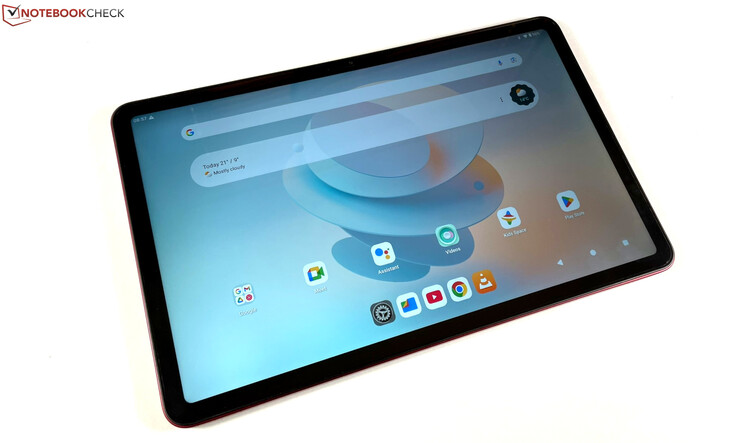






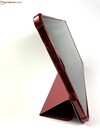







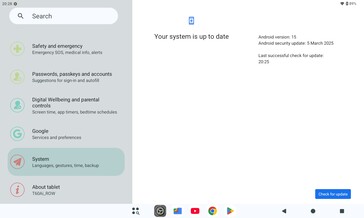
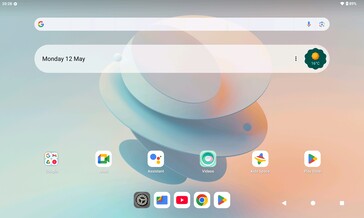
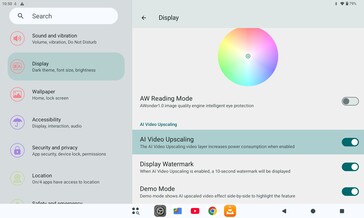
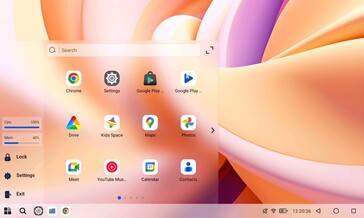
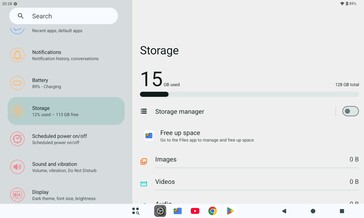
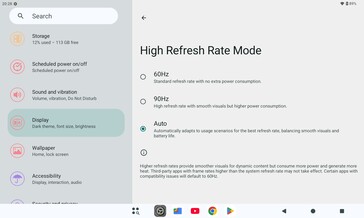


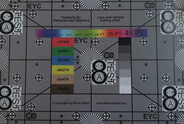



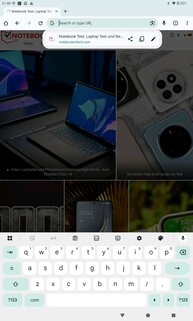
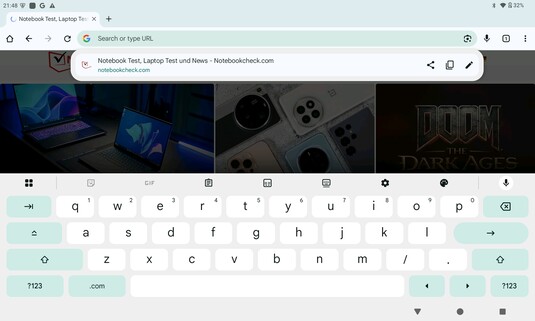
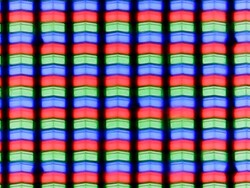
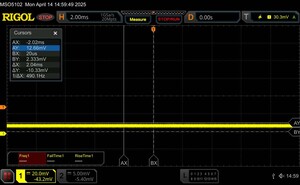


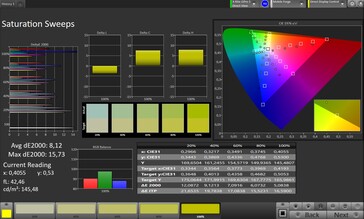
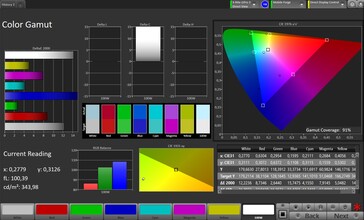
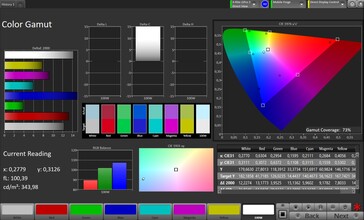
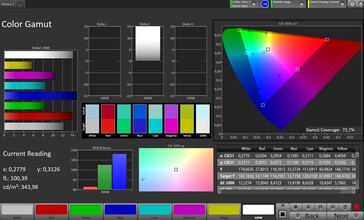
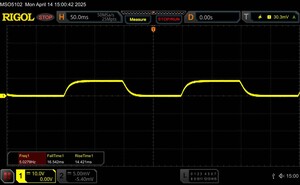
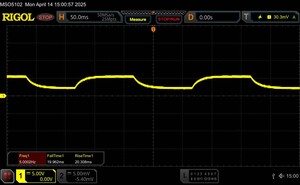




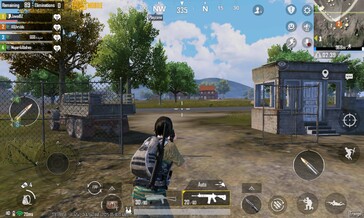
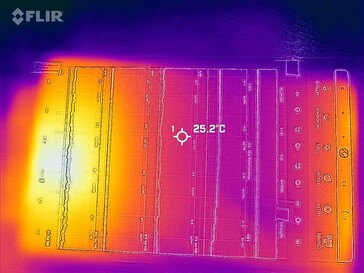

 Total Sustainability Score:
Total Sustainability Score: 

